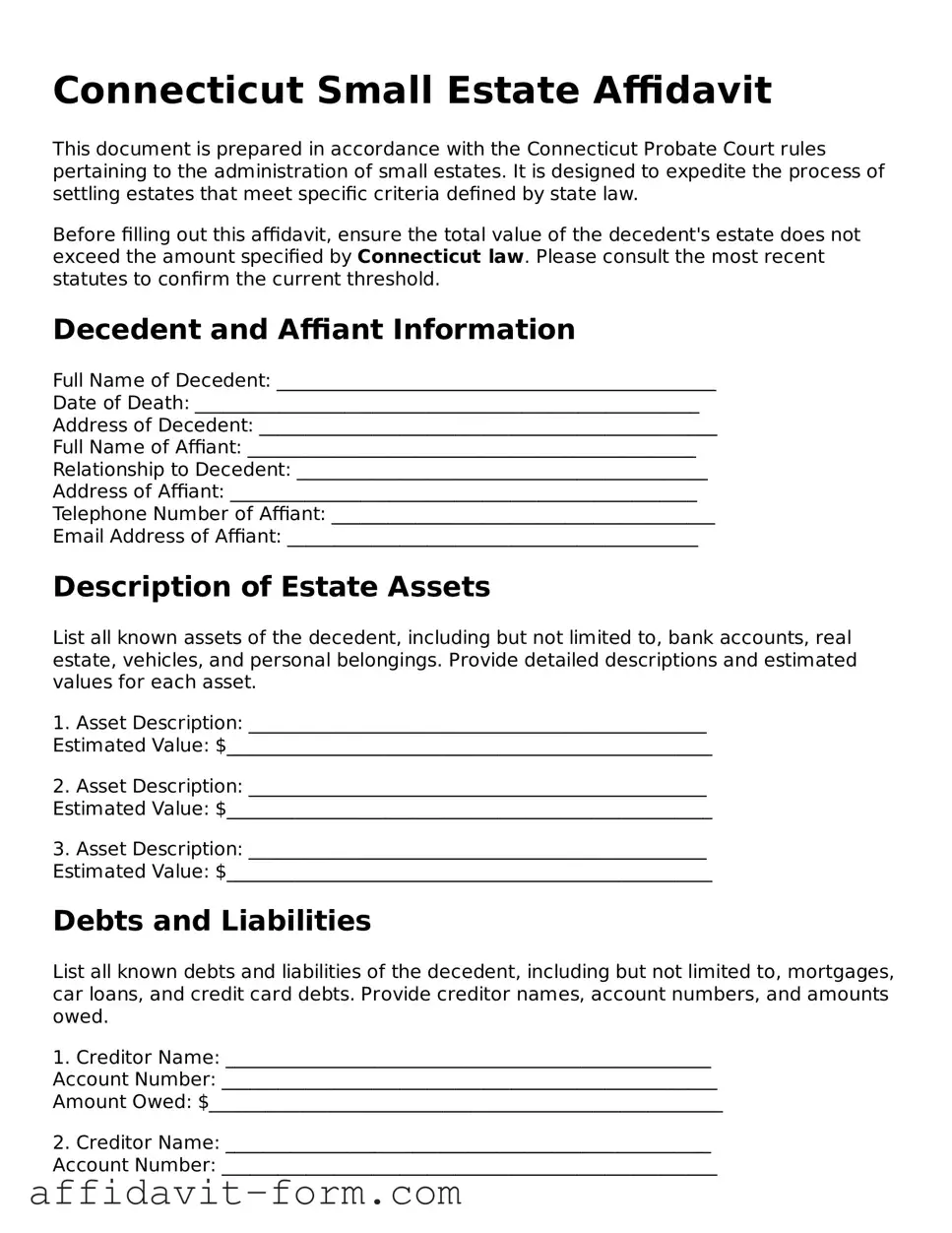Connecticut Small Estate Affidavit
This document is prepared in accordance with the Connecticut Probate Court rules pertaining to the administration of small estates. It is designed to expedite the process of settling estates that meet specific criteria defined by state law.
Before filling out this affidavit, ensure the total value of the decedent's estate does not exceed the amount specified by Connecticut law. Please consult the most recent statutes to confirm the current threshold.
Decedent and Affiant Information
Full Name of Decedent: _______________________________________________
Date of Death: ______________________________________________________
Address of Decedent: _________________________________________________
Full Name of Affiant: ________________________________________________
Relationship to Decedent: ____________________________________________
Address of Affiant: __________________________________________________
Telephone Number of Affiant: _________________________________________
Email Address of Affiant: ____________________________________________
Description of Estate Assets
List all known assets of the decedent, including but not limited to, bank accounts, real estate, vehicles, and personal belongings. Provide detailed descriptions and estimated values for each asset.
1. Asset Description: _________________________________________________
Estimated Value: $____________________________________________________
2. Asset Description: _________________________________________________
Estimated Value: $____________________________________________________
3. Asset Description: _________________________________________________
Estimated Value: $____________________________________________________
add more assets as needed
Debts and Liabilities
List all known debts and liabilities of the decedent, including but not limited to, mortgages, car loans, and credit card debts. Provide creditor names, account numbers, and amounts owed.
1. Creditor Name: ____________________________________________________
Account Number: _____________________________________________________
Amount Owed: $_______________________________________________________
2. Creditor Name: ____________________________________________________
Account Number: _____________________________________________________
Amount Owed: $_______________________________________________________
add more debts as needed
Oath or Affirmation of Affiant
I, _________________________, solemnly swear or affirm that the information provided in this affidavit is true and accurate to the best of my knowledge and belief. I understand that any false statement made herein may subject me to penalties under the law.
Signature of Affiant: ___________________________ Date: _______________
Notary Acknowledgment
This section must be completed by a Notary Public.
State of Connecticut
County of _______________________
On this _____ day of ___________, 20___, before me, __________________________ (name of notary), personally appeared __________________________ (name of affiant), known to me (or satisfactorily proven) to be the person whose name is subscribed to the within instrument, and acknowledged that he/she executed the same for the purposes therein contained.
In witness whereof, I have hereunto set my hand and official seal.
_________________________________
Notary Public
My Commission Expires: ______________
